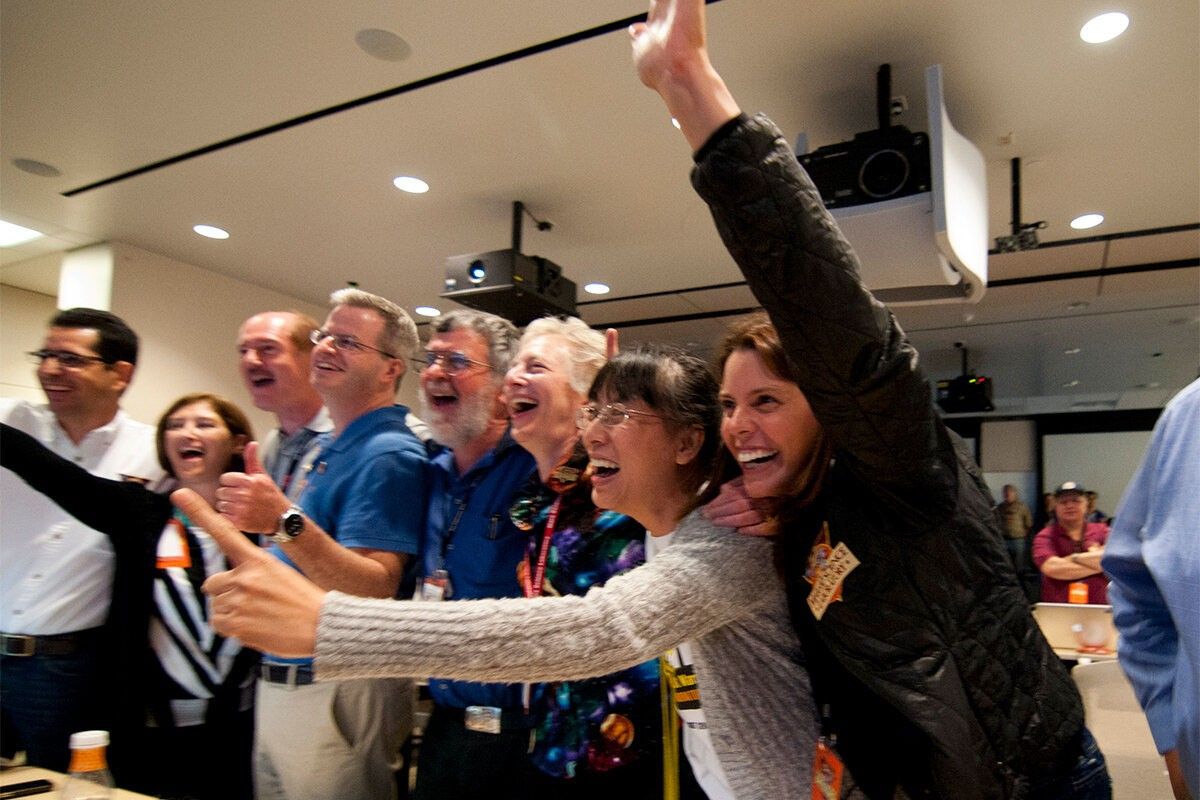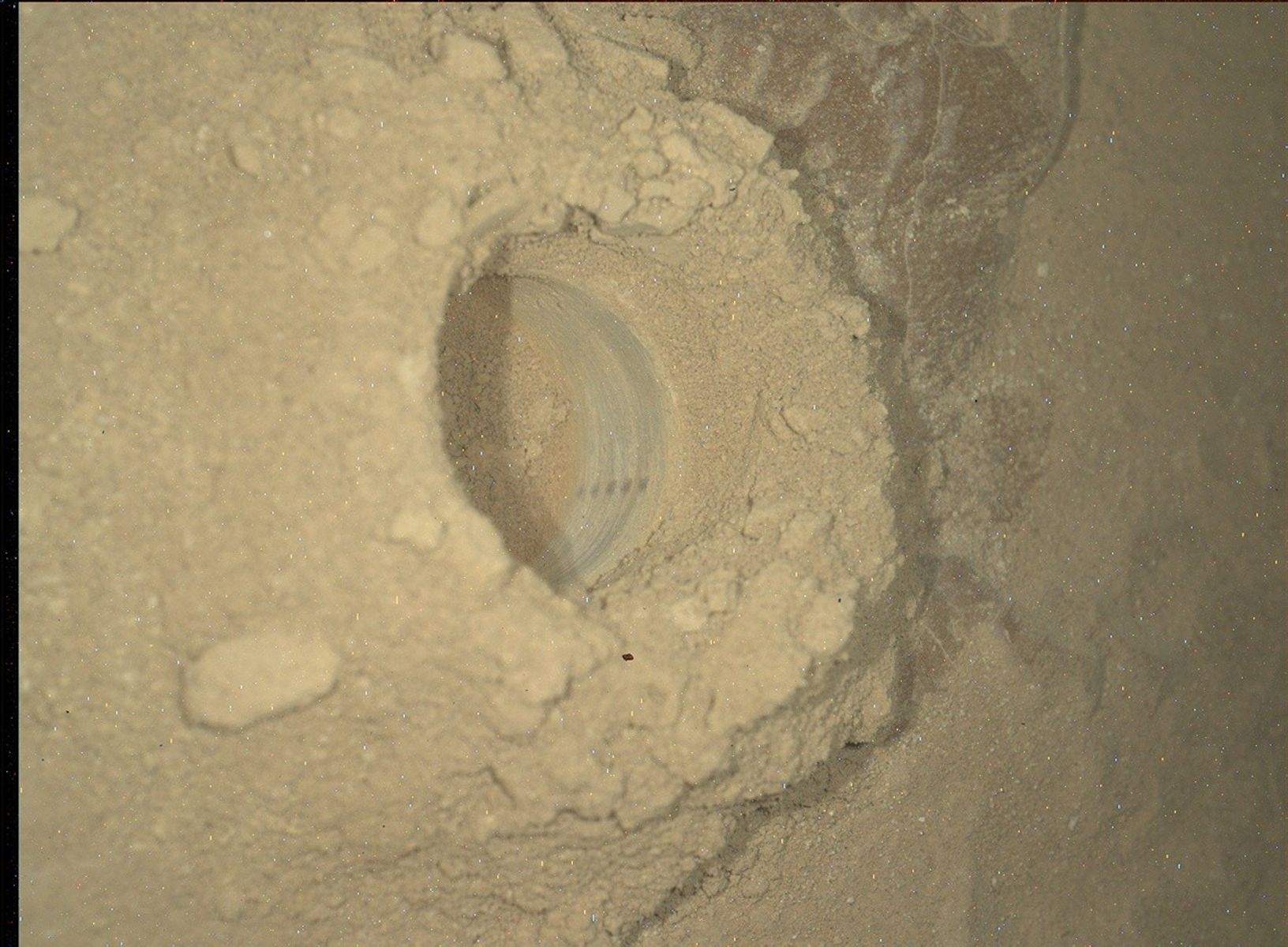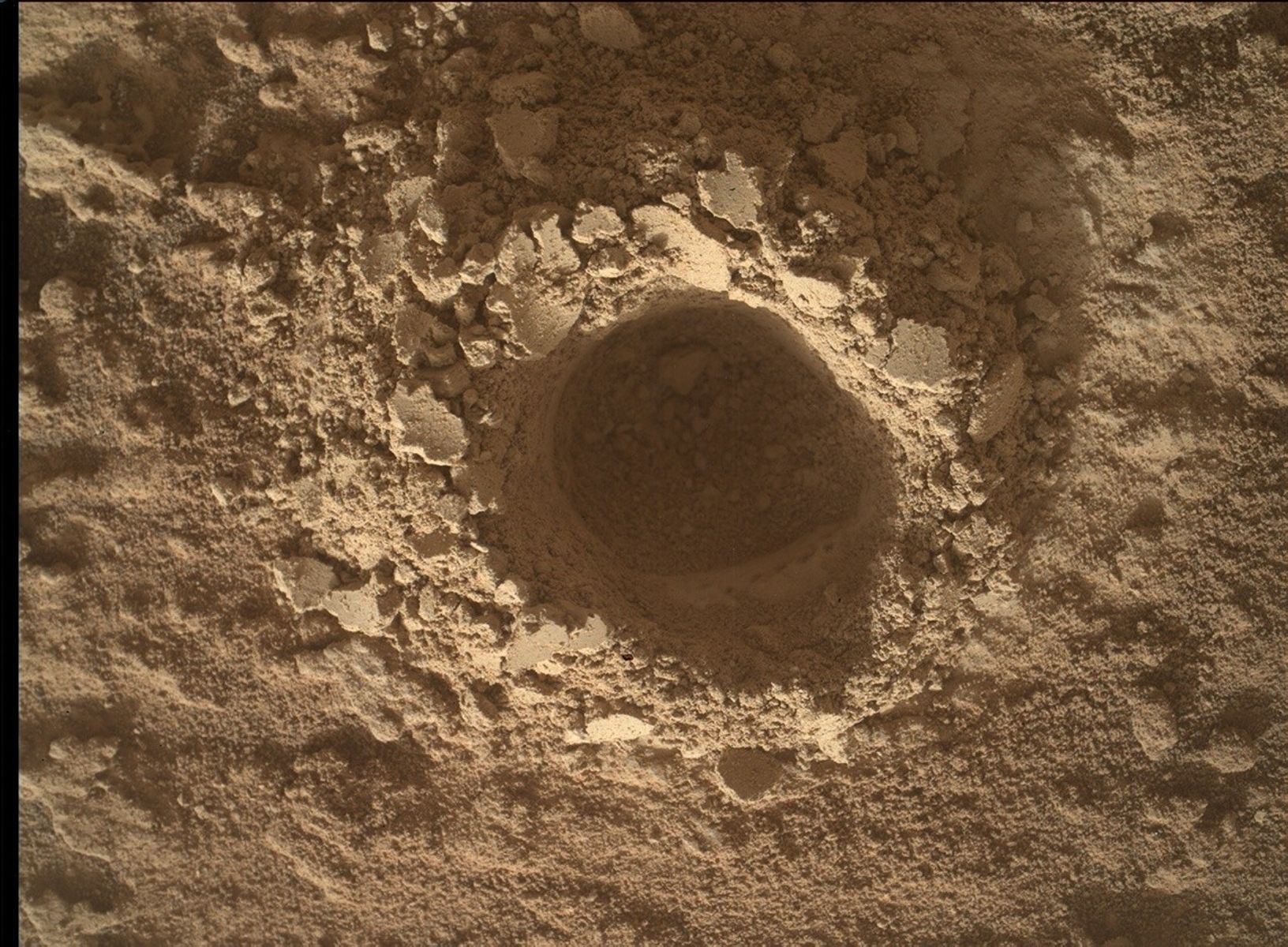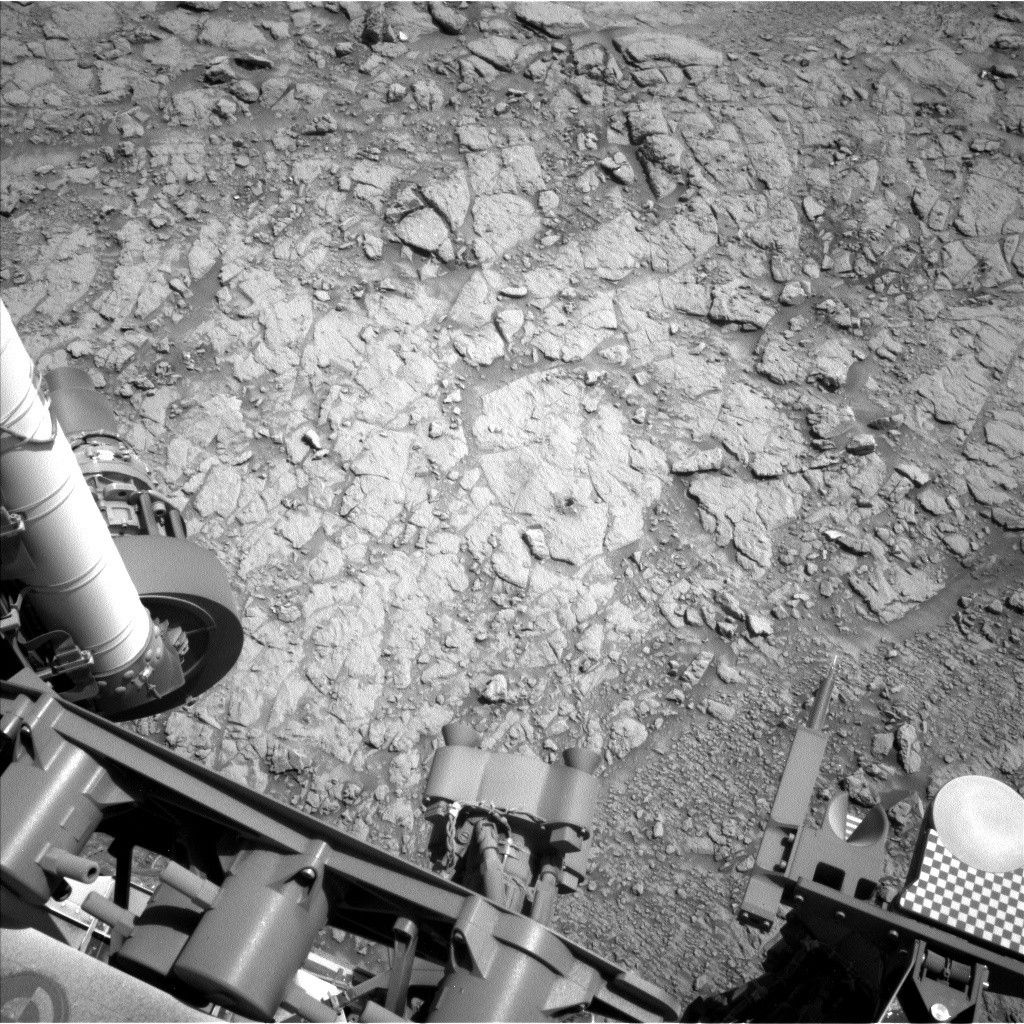Tosol we uplinked a two-sol plan as Curiosity continues to navigate "Paraitepuy Pass." The terrain surrounding the rover, while visually stunning, has impacted our communication bandwidth and timing. In addition, these days Earth rises relatively late on Mars, pushing the handover (i.e., start of the plan) to the late morning when the thermal environment is suboptimal for APXS touch-and-gos. Curiosity did unstow the arm prior to driving, acquiring MAHLI images of targets "Arorouta" and "Yakontipu," the former of which was acquired after a ChemCam 5x1 LIBS raster.
In the science block before the arm backbone, ChemCam also acquired a RMI mosaic on "Ponto_Triplice" which was followed by an array of Mastcam images on Arorouta, "Paruima," "Karrau," "Kavanayen," "Bolivar_Base," "Karasabai," "Meyuni_Island," and Ponto_Triplice. A 24 m drive followed which will present us with a new workspace for Friday's three-sol plan; our intent is to do full contact science, including APXS on a brushed target.
On the second sol, Curiosity completes a post-drive AEGIS ChemCam activity and acquires various Navcam images targeting dust devils, in addition to suprahorizon and cloud movies. Alongside its usual REMS monitoring cadence, Curiosity then acquires a MARDI image of what's under the rover to round out the science activities in the plan.
Today's plan includes the moment our beloved rover will celebrate 10 (Earth) years after landing. I have been fortunate enough to have been a part of this mission since before launch, just a wide-eyed physics graduate student soaking it all in. I can vividly remember landing night and the unbelievable outpouring of raw elation by everyone in the room. Looking back on the ten years since, I remember the first experiment I proposed on sol 35. I remember the first APXS raster, sol 165 on a Ca-sulfate vein "Sayunei," the analysis of which ultimately led to the development of a new APXS analytical method that was the cornerstone of my PhD dissertation. I remember the scare of the sol 200 anomaly and surviving the 2018 Mars global dust storm that unfortunately left Curiosity the lone rover on the surface of Mars until joined by Perseverance 18 months ago. Everyone who has worked on this amazing mission has their own personal connection to its journey.
As we the science and engineering teams have aged this last decade, so has Curiosity. The toll of ten years and nearly 28.5 km of Mars driving shows with every MAHLI wheel imaging activity, with less energy available for a plan, and with aging mechanisms. This is the life of a Mars rover. Spirit and Opportunity were no different, yet they persisted and paved the way scientifically and technologically for the rovers of today. Curiosity has made numerous scientific discoveries during these ten years, emphasized by the over 500 science team publications, with many more ahead as we continue our ascent and exploration of Gale crater and Mount Sharp.
I look forward to the next ten years.
Written by Scott VanBommel, Planetary Scientist at Washington University
































